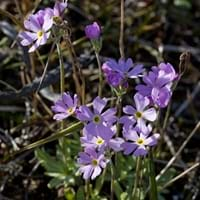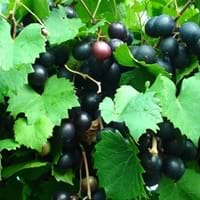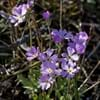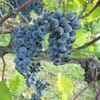Life Span
Perennial
Perennial
Origin
Northeastern United States, Mid-Atlantic United States, Southeastern United States, North-Central United States, Central United States, South-Central United States
Southeastern United States, Mexico
Types
Not Available
Not available
Habitat
Roadsides, sand dunes, Waste areas
Lowland, sand dunes, Upland
USDA Hardiness Zone
5-8
6-10
Sunset Zone
1a, 1b, 2a, 2b, 3a, 3b, 4, 5, 6, 7, 8, 9, 10, 11, 12, 13, 14, 15, 16, 17, 18, 19, 20, 21, 22, 23, 24
Not Available
Habit
Clump-Forming
Vining/Climbing
Minimum Height
Not Available
Flower Color
White, Ivory
White, Green
Flower Color Modifier
Bicolor
Bicolor
Fruit Color
Tan
Green, Burgundy, Plum, Bronze, Brown
Leaf Color in Spring
Green
Green
Leaf Color in Summer
Green
Green
Leaf Color in Fall
Green
Green, Gold, Tan
Leaf Color in Winter
Light Green
Light Green
Leaf Shape
Oblong
V-Shaped
Plant Season
Summer
Spring, Summer, Fall
Sunlight
Full Sun, Partial Sun
Full Sun, Partial Sun
Type of Soil
Loam, Sand
Clay, Loam, Sand
The pH of Soil
Acidic, Neutral, Alkaline
Acidic, Neutral
Soil Drainage
Well drained
Well drained
Bloom Time
Early Summer, Summer, Late Summer
Spring, Late Spring, Early Summer
Tolerances
Variety of soil types
Pests and diseases, Shade areas
Where to Plant?
Container, Ground, Pot
Ground, Pot
How to Plant?
Divison, Seedlings, Stem Planting
Layering, Seedlings
Plant Maintenance
Low
Medium
Watering Requirements
Average Water Needs, Do Not over Water, Never Over-water, Requires regular watering, Water more in summer
Requires regular watering, Water during dry weather
In Summer
Lots of watering
Lots of watering
In Spring
Moderate
Moderate
In Winter
Average Water
Average Water
Soil pH
Acidic, Neutral, Alkaline
Acidic, Neutral
Soil Type
Loam, Sand
Clay, Loam, Sand
Soil Drainage Capacity
Well drained
Well drained
Sun Exposure
Full Sun, Partial Sun
Full Sun, Partial Sun
Pruning
Remove damaged leaves, Remove dead branches, Remove dead leaves, Remove dead or diseased plant parts
Remove branches that rub together, Remove damaged leaves, Remove dead branches, Remove dead leaves
Fertilizers
All-Purpose Liquid Fertilizer, fertilize in growing season
Apply 10-10-10 amount, Apply N-P-K, Requires high amount of nitrogen
Pests and Diseases
Slugs, Snails
Leaf spot, Nematodes, Powdery mildew
Plant Tolerance
Variety of soil types
Pests and diseases, Shade areas
Flowers
Yes
Insignificant
Flower Petal Number
Single
Single
Foliage Texture
Fine
Medium
Foliage Sheen
Matte
Glossy
Allergy
Abdominal pain, Constipation, Diarrhea, Skin irritation
Not Available
Aesthetic Uses
Beautification, Borders, Landscape Designing, Showy Purposes
Beautification
Beauty Benefits
Good for skin, Making cosmetics, Stops hair loss
Not Available
Environmental Uses
Air purification, Food for insects, Versatility
Agroforestry
Medicinal Uses
Eczema
anti-inflammatory, Anti-oxidant
Part of Plant Used
Root
Fruits, Leaves
Other Uses
Decoration Purposes, Medicinal oil, Showy Purposes, Used as Ornamental plant, Used for its medicinal properties
Sometimes used for making wine, Used to make juice, Used to make yellow dye
Used As Indoor Plant
Yes
No
Used As Outdoor Plant
Yes
Yes
Garden Design
Edging, Feature Plant, Groundcover, Mixed Border
Edible, Fruit / Fruit Tree, Rock Garden / Wall, Screening / Wind Break, Topiary / Bonsai / Espalier, Vine
Botanical Name
Primula mistassinica
VITIS rotundifolia
Common Name
Mistassini primrose, Lake Mistassini primrose, bird's-eye primrose
Muscadine
In Hindi
Mistassini Primrose
Muscadine
In German
Mistassini Primrose
Muscadine
In French
Primrose Mistassini
Muscadine
In Spanish
Mistassini Primrose
Muscadine
In Greek
Mistassini Primrose
μοσχοστάφυλο
In Portuguese
Mistassini Primrose
Muscadine
In Polish
Mistassini Primrose
Muscadine
In Latin
Mistassini Primrose
Muscadine
Phylum
Magnoliophyta
Magnoliophyta
Class
Magnoliopsida
Magnoliopsida
Family
Onagraceae
Vitaceae
Clade
Angiosperms, Eudicots, Rosids
Angiosperms, Eudicots, Rosids
Tribe
Onagreae
Not Available
Subfamily
Onagroideae
Not Available
Season and Care of Mistassini Primrose and Muscadine
Season and care of Mistassini Primrose and Muscadine is important to know. While considering everything about Mistassini Primrose and Muscadine Care, growing season is an essential factor. Mistassini Primrose season is Summer and Muscadine season is Summer. The type of soil for Mistassini Primrose is Loam, Sand and for Muscadine is Clay, Loam, Sand while the PH of soil for Mistassini Primrose is Acidic, Neutral, Alkaline and for Muscadine is Acidic, Neutral.
Mistassini Primrose and Muscadine Physical Information
Mistassini Primrose and Muscadine physical information is very important for comparison. Mistassini Primrose height is 610.00 cm and width 460.00 cm whereas Muscadine height is Not Available and width 910.00 cm. The color specification of Mistassini Primrose and Muscadine are as follows:
Mistassini Primrose flower color: White and Ivory
Mistassini Primrose leaf color: Green
Muscadine flower color: White and Green
- Muscadine leaf color: Green
Care of Mistassini Primrose and Muscadine
Care of Mistassini Primrose and Muscadine include pruning, fertilizers, watering etc. Mistassini Primrose pruning is done Remove damaged leaves, Remove dead branches, Remove dead leaves and Remove dead or diseased plant parts and Muscadine pruning is done Remove branches that rub together, Remove damaged leaves, Remove dead branches and Remove dead leaves. In summer Mistassini Primrose needs Lots of watering and in winter, it needs Average Water. Whereas, in summer Muscadine needs Lots of watering and in winter, it needs Average Water.





